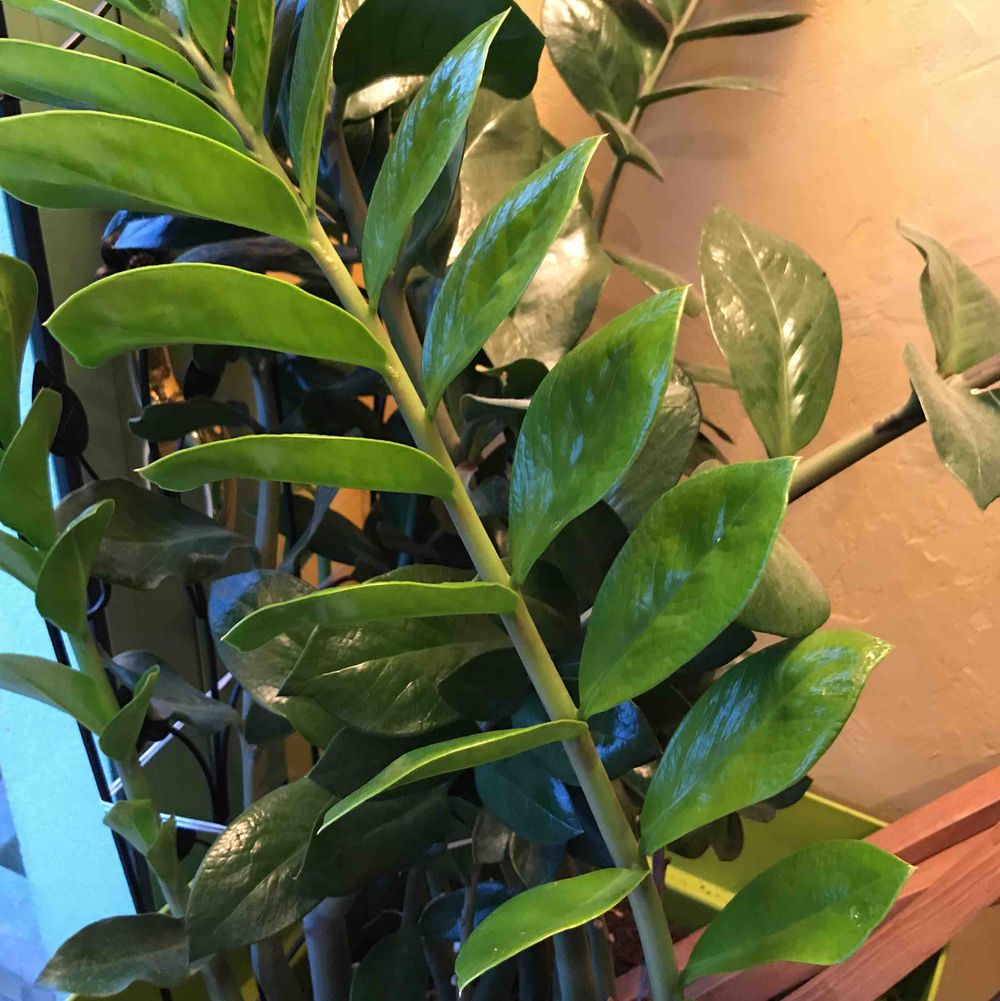Zamioculcas zamiifolia
(Emerald Palm)

Description
Emerald Palm, also known as the Areca Palm or Dypsis lutescens, is a popular indoor plant that is native to Madagascar. It belongs to the family Arecaceae, which includes more than 2,500 species of palms. The Emerald Palm is a relatively easy plant to care for, making it a popular choice for indoor gardening enthusiasts. In this article, we will explore the various aspects of the Emerald Palm, including its physical characteristics, growth requirements, and how to care for it. Physical Characteristics The Emerald Palm is a medium-sized, slender plant that typically grows to a height of 6-7 feet, although it can reach up to 10 feet under ideal growing conditions. Its trunk is thin and golden brown, and is typically covered in a layer of fibrous material. The leaves of the Emerald Palm are feather-like and grow up to 8 feet in length. The fronds emerge from the top of the trunk in a rosette pattern and are light green in color, giving the plant its distinctive emerald appearance. The plant also produces small yellow flowers, which eventually give way to small, red-orange fruits. Growth Requirements The Emerald Palm is a tropical plant that thrives in warm, humid environments. It prefers well-draining soil that is rich in nutrients, and requires regular watering to maintain its moisture levels. In terms of light requirements, the Emerald Palm prefers bright, indirect light, although it can tolerate some direct sunlight as well. It is important to avoid placing the plant in areas with cold drafts or extreme temperature fluctuations, as these can cause damage to the plant. Propagation The Emerald Palm can be propagated through both seed and vegetative means. When propagating through seed, it is important to keep the seeds moist and warm, as they require a consistent temperature of around 80°F to germinate. The plant can also be propagated through vegetative means, such as division or stem cuttings. When propagating through division, it is important to separate the plant at the root ball, ensuring that each section has adequate roots and foliage. When propagating through stem cuttings, it is important to use a sterile cutting tool and allow the cutting to callus over before planting it in well-draining soil. Care and Maintenance Caring for the Emerald Palm is relatively simple, but requires regular attention. In terms of watering, it is important to keep the soil consistently moist, but not waterlogged. Overwatering can lead to root rot, which can be fatal to the plant. The Emerald Palm also benefits from regular fertilization, with a balanced, slow-release fertilizer applied every 2-3 months during the growing season. It is important to avoid fertilizing during the winter months, as the plant’s growth slows down during this time. In terms of pest management, the Emerald Palm is relatively pest-resistant, but can occasionally be affected by spider mites, scale, or mealybugs. These pests can be controlled through the use of insecticidal soap or neem oil. Conclusion The Emerald Palm is a popular indoor plant that is relatively easy to care for and adds a touch of tropical beauty to any home or office. With its slender trunk, feather-like leaves, and emerald green color, the Emerald Palm is a striking addition to any indoor garden. By providing the plant with the right growing conditions, regular attention, and proper care, it can thrive for many years, adding a touch of natural beauty to your home.
Taxonomic tree:







